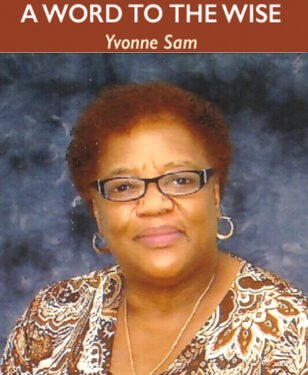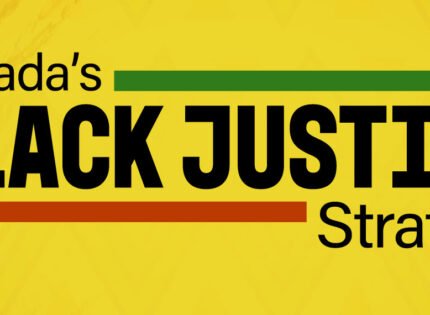 Once again the issue regarding absence of diversity in the judiciary system has reared its ugly intractable head; this time with a call coming from one of its own Judge Daniel Dortelus, who is slated to retire on July 22.
Once again the issue regarding absence of diversity in the judiciary system has reared its ugly intractable head; this time with a call coming from one of its own Judge Daniel Dortelus, who is slated to retire on July 22.
Such a request is in no way new, instead it has joined the waiting “wish list” of his legal confreres and concerned others.
The history of the absence of diversity in the judiciary has long and far reaching tentacles, albeit steeped in racism.
Diversity is an essential component of a fair and impartial judiciary, as courts should reflect the communities they serve. At a forum held virtually on September 17, 2020 the Hon. David Lametti, Minister of Justice and Attorney General reiterated a previously- made commitment to rooting out systemic racism from the justice system.
Another issue also raised was the fact that the Supreme Court of Canada is composed entirely of white judges, meaning judges who lack first-hand knowledge and experience of the racism and systemic challenges faced by people of colour.
A more racially diverse judiciary would have more credibility among members of equality-seeking communities.
While the minister remained committed to doing his best to promote all forms of diversity on the bench, including in the Supreme Court of Canada, the Commissioner for Federal Judicial Affairs Hon. Marc Giroux , stated that they are still not receiving enough applications from groups that may better reflect the diversity in Canada.
Unlike Ontario or the United Kingdom, the Canadian federal government does not release information about the gender and ethnicity of judicial applicants. The non-reporting of this basic information renders it somewhat impossible to challenge the assertion that minority representatives do not apply.
Anecdotal information from legal groups and associations tell a different story. Pertaining to visible minorities, in the application process any questions of ethnicity is left up to the applicants to spontaneously self-identify, entirely at their option.
The downloadable judicial application form gets all the way to Page 10 before it says: “Given the goal of ensuring the development and maintenance of a judiciary that is representative of the diversity of Canadian society, you may, if you choose, provide information about yourself that you feel would assist in this objective. There is no obligation to do so.”
Note that the applicant may choose whether or not to provide information.
The call for correction of the absence of diversity on the Bench, and Prime Minister Justin Trudeau’s reformation of the judicial selection process have brought to the fore, the career route, taken by judges, before they attain a seat on the highest court.
A December 20, 2016, letter was sent to Prime Minister Justin Trudeau also to the Barreau du Quebec by this author requesting the number of lawyers, members of the Bar who identified as belonging to a cultural community, and the mode of notification of vacant positions.
A copy of the response was sent to Mme. Stephanie Vallee the then Minister of Justice, and also Mme. Lucie Rondeau Chief Judge Cour du Québec.
The election of a new federal government in 2015 brought in its wake a promise for review of the appointment process for Supreme Court Justices.
However, in 2016 the Trudeau government changed the appointment process for the Supreme Court of Canada by introducing a requirement for functional bilingualism.
On July 14, 2017, Trudeau, announced the members of the independent and non-partisan Advisory Board, who will assist and support the search for the next Supreme Court Justice. While diversity has been exalted as the key issue in improving the Canadian judicial selection system, the system remains incompatible, with regards to achieving a more representative bench.
The dean of Osgoode Law School, at York University, aptly summed up the issue of diversity when he said, “Canada has never had a Supreme Court justice who is Indigenous, who is from a visible minority, who has a religious background that is not Christian or Jewish”
In order to make meaningful improvements to the diversity on the bench, steps must be taken along each stage of the pipeline, to pave the way for appointments.
Another inherent limitation, which further perpetuates the problem, is that it is more difficult for individuals to aspire to positions without seeing “someone like them” in the position.
This creates the clichéd “Catch 22.”
When a group does not see themselves included, they feel alienated. Lawyers refer to this as “the chilling factor”.
Considering that the Courts are among the structuring institutions in our society, the chilling effect operates not only at that level but also dampens ambitions more generally.
The quasi-absence of visible minority judges in Quebec also sends a very negative message to Quebec society: insinuating that there are no qualified candidates.
Were it not for Judge Dortelus and Judge Magali Lewis, who were named to the Civil Chambers of the Court of Quebec, there would be no representation of racialized minorities, including African Canadians, represented in the Court of Quebec.
Although in 1999, a Supreme Court of Canada decision, in Regina concluded that the overrepresentation of aboriginal peoples in the criminal justice system qualified as a “crisis”, the likelihood of an aboriginal person facing an aboriginal judge remains virtually unchanged.
A diverse bench that reflects the face of the community serves as a safeguard against institutional bias and racism and the omnipresence of implicit or unconscious bias.
The word diversity seems to understood in word, but not in deed.
Prime Minister Trudeau has reformed the judicial selection process for the Supreme Court, but in order to attain real success, the government needs to have a clear vision.
Failing to do so would turn the future selection process into political window-dressing, dealing another blow to the issue of diversity.
The 48 recommendations of the Bastarache Commission under Supreme Court Justice Michel Bastarache should not be lightly overlooked.
This continuing failure to seriously address the absence of diversity on the bench threatens the capacity of Canadian courts to deliver impartial justice, in a time of rapid change, increasing diversity, and mounting inequality. As Canadians we all deserve better.
The clarion has been sounded. The reasons founded. The Prime Minister is now called upon to heed the call.
Yvonne Sam serves as Chair of the Rights & Freedom Committee at the Black Community Resource Centre.
The Absence Of Diversity In The Canadian Judiciary has a long history
















